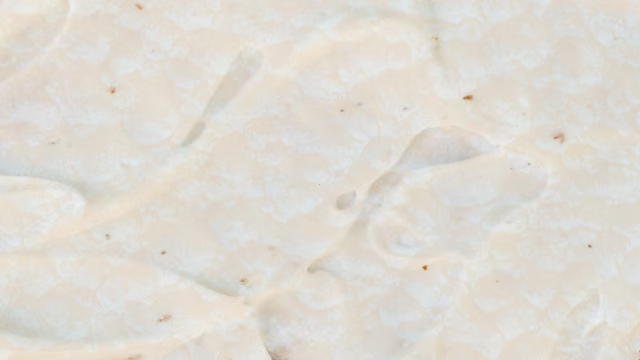What we know is true about yeast infections
1. Yeast infections are common: In fact, the CDC estimates that about 75% of people with a uterus will experience at least one yeast infection during their lifetime, and nearly 40-50% have recurrent infections.
2. They’re caused by an overgrowth of a type of fungus called Candida, which is normally present in the body in small amounts. (Emphasis on normal—Candida is one of the most common fungi in the human body!)
3. Yeast infections can vary from person to person.
“Some people associate it with itching. Others associate it with a cottage cheese-like discharge. So the presentation of yeast can be different, depending on the person.” —Court, patient care advocate at Hey Jane
4. Yeast infections are usually easy to treat, and figuring out your triggers is key to dealing with them. With the right provider, you can get relief fast and figure out the root cause—without judgment. Looking to treat a yeast infection? Get started now.
5. While Hey Jane’s Medical Director likes to joke that having a yeast infection is “baking bread,” in reality the yeast you’d find in your vagina is very different from the yeast you’d use to make bread. In fact, “yeast” can mean any of the 1,500 species of single-celled fungi that have been identified by scientists.


Yeast infections are caused by sex: Sometimes!
During a yeast infection, your vaginal microbiome gets thrown out of whack. Different elements of sex—having something inside your vagina, using lubricant, intercourse with a partner, or semen—can all be contributing factors to a change and pH and then, a yeast infection. It’s important to remember that there are many factors that can trigger a yeast infection from normal hormone level changes to an underlying health condition like diabetes.
Can semen cause a yeast infection?
While sperm itself can’t cause a yeast infection, ejaculation inside the vagina can alter the vaginal microbiome—which might lead to yeast infections. There’s no reason to feel ashamed about this; if that’s something you want to continue doing, you can reduce the risk of getting a yeast infection by using the toilet immediately after sex so that the semen doesn’t sit inside you. (Remember: Yeast loves warm, moist environments.)
“Allowing someone to ejaculate inside of you is a huge reason people get yeast infections. Especially when they're new to you, because your body is not used to their microbiome, and their sperm has its own pH. I encourage people to talk about it without shame—a good partner might not know but wants to be educated on it. They will listen and hear you out.” —Sally (RN, BSN), nurse at Hey Jane
Can you pass a yeast infection to a sexual partner?
Not only is there nothing wrong with having a yeast infection, but it’s also very unlikely for you to pass it along to a partner.
Can you have sex while treating a yeast infection?
Your personal comfort level is what’s most important here—for some people, the friction may prolong symptoms, but medically speaking there’s no reason to not have sex if you want to.
“You can absolutely have sex, but it just might not be as comfortable as non-yeast days” —Nurse Practitioner F (FNP, BC) at Hey Jane
Having a yeast infections means your have bad hygiene: False
Getting a yeast infection is not a sign that you’ve done something wrong, or that you’re dirty. Rather, it’s just an indicator that your natural vaginal flora is off balance—and, with the right treatment, it’s easy to get it back in balance.
Does having vaginal discharge mean I have a yeast infection?
Let us be clear: Discharge is normal! As long as it doesn't itch, smell, or burn, discharge is a sign that your body is healthy. (Bonus: It’s a great lubricant!)
Let a provider know if your discharge is not what’s normal for you—but also keep in mind that discharge changes depending where someone is in their menstrual cycle (so what’s normal for pre-period should be different from what’s normal during ovulation).
Changes in hormones can cause a yeast infection: True
Hormonal changes can trigger a yeast infection—in particular, when your estrogen levels are elevated. That includes parts of the menstrual cycle, particularly the luteal phase right before your period starts, as well as when you’re pregnant or during estrogen replacement therapy for menopause.
Can pregnancy cause a yeast infection?
“Being pregnant increases your risk because your estrogen levels are higher, and those hormone fluctuations can increase the risk of yeast infection.” —Emily (RN, WHNP-BC), nurse at Hey Jane
Can using birth control cause a yeast infection?
The data on whether birth control can cause yeast infections is mixed—and really depends on the type of birth control. For birth control pills, the association would on be with high-estrogen pills, which aren’t prescribed as often these days. With other forms of birth control that sit inside the vagina (such as an IUD, sponge, or diaphragm), it’s the same risk as you’d have by inserting any foreign body into the vagina—something to be aware of, especially if you have recurring yeast infections.
Can having an abortion cause a yeast infection?
While an abortion itself wouldn’t cause a yeast infection, the bleeding and change in vaginal pH could. This is why menstruation, which also results in vaginal bleeding and pH changes, can be a contributing factor to developing a yeast infection.
You can treat yeast infections with at-home remedies: False
While there are a number of at-home remedies for yeast infections, most of them are urban legend with little to no clinical research supporting them as an effective and safe alternative to over-the-counter and prescription treatments. Looking for care? You don’t have to wait to see a doctor in-person—get treatment from the comfort and convenience of your phone with the support of our team of compassionate, licensed providers.
Can boric acid help treat a yeast infection?
While boric acid is not approved for the treatment of a yeast infection, there is a growing body of research to support that it can help prevent them. The science is still mixed—but it’s a low-risk, over-the-counter option that won’t harm you. Just make sure that, if you do take boric acid, you go for suppositories (ie vaginally)—taking boric acid orally is toxic. (You also should also wait 24 hours before receiving oral sex, for that very reason.)
Can garlic help treat a yeast infection? What about yogurt?
We don’t care what TikTok says: Do not put a garlic clove or a yogurt-soaked tampon into your vagina if you have a yeast infection. Not only will that hurt, but there’s no evidence that it will help with prevention or treatment. In fact, the naturally occurring sugar in dairy products could help fuel the growth of Candida in your vagina. There are other times when you may want to eat yogurt—for example, if you’re taking antibiotics—but a yeast infection isn’t one of them. (Source: PubMed Central; Health)
Can probiotics help treat a yeast infection?
While taking probiotics won’t harm you, the research is mixed and there have been no large studies that indicate probiotics can cure a yeast infection.
Yeast infections can’t be prevented: False
The best way to prevent yeast infections is to identify and track potential triggers. That includes tracking events like menstruation, hormonal changes like birth control, what products and fabrics you’re using around your vulva, and anything else that seems to happen right before or during your yeast infection. If you get yeast infections frequently, your provider may recommend additional testing for underlying conditions such as diabetes or hormonal imbalances.
Can wearing liners help prevent a yeast infection?
While you might think that wearing liners can help prevent yeast infections, they may cause more harm than good. Not only is discharge normal, but a liner will create a warm, moist environment that could actually lead to a yeast infection.
“A number of patients I’ve met who have reoccurring yeast infections have been taught they’re unclean, that they have to wear liners every day to catch discharge. Wearing liners everyday predisposes [you] to get yeast infections! Discharge is normal. Stop wearing liners unless you have spotting.” —Nurse Practitioner F (FNP, BC), at Hey Jane
Can specific fabrics prevent (or cause) a yeast infection?
Wet bathing suits, non-cotton underwear, or thongs CAN cause yeast infections. The wait-30-minutes-to-swim-after-eating rumor is a myth, but you should change out of your wet swimsuit ASAP once you’re out of the water, since that can be a yeast infection trigger. Same goes for non-cotton underwear or even thongs, depending on the person. And if you want to go commando? That’s cool, too.
“Your vagina needs to breathe. Go with breathable fabrics—and cotton is top tier.” —Nurse Practitioner F (FNP, BC) at Hey Jane
Can specific toilet paper cause a yeast infection?
While fragrance, bleach, or other chemicals that can be found in some toilet papers are generally not great for your vaginal microbiome, you’d really have to be wiping intensely and for long periods of time to have that cause a yeast infection.
Can you swim with a yeast infection?
Yes, but it may make your symptoms worse. While there is no scientific evidence that it’s unsafe to swim with a yeast infection, the warm, moist environment of a pool can potentially make your symptoms worse, causing extra discomfort. If you do go swimming, try to change out of your wet bathing suit and into dry, breathable clothes as soon as you’re done.


Want to take action?
Join the Un-Whisper Network

















